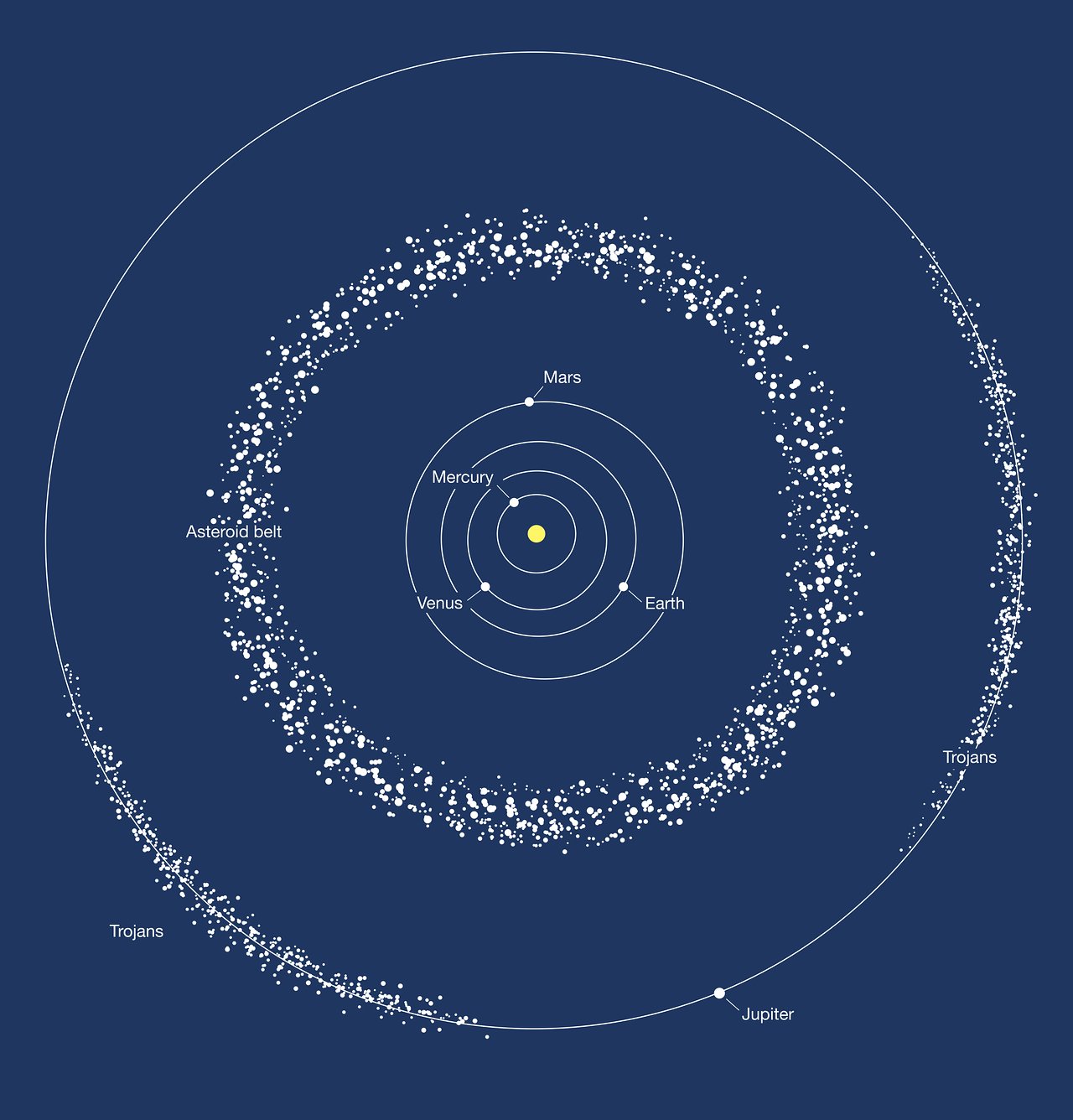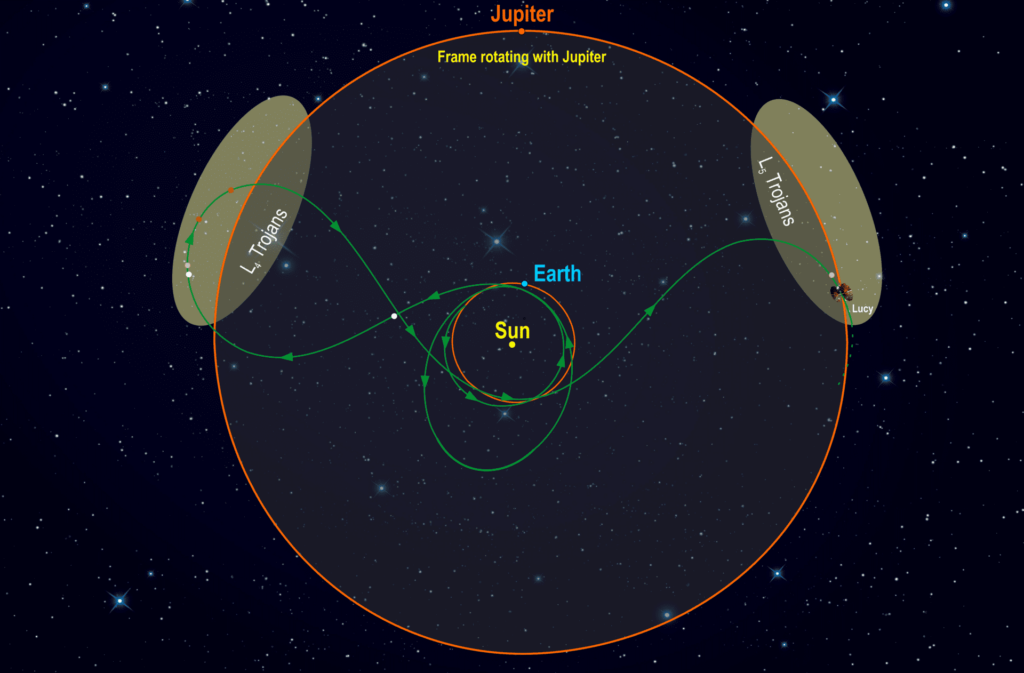An international team of researchers has published the results of a study of asymmetry in the distribution of Trojan asteroids of Jupiter. Scientists have come to the conclusion that it may be related to the consequences of the migration of the planet.

The largest planet in the Solar System has two impressive groups of asteroids, which are located in the vicinity of the Lagrange points L₄ and L₅ of the Sun-Jupiter system. According to the existing tradition, they are called by the names of the characters of the Iliad. Asteroids at the point L₄, which is located “ahead” (that is, in the course of the orbital motion of Jupiter) are named after the Greeks, at the point L₅ (it is located “behind”) — in honor of the Trojans.
In total, the population of Trojan asteroids of Jupiter is estimated at more than 10 thousand objects. Astronomers knew for a long time that the point L₄ contained much more celestial bodies than the point L₅, but they did not know the reason for this difference. In the current configuration of the Solar System, the two swarms demonstrate almost identical properties of dynamic stability and survivability.
This led scientists to the idea that the reasons for the differences should be sought in the distant past. They developed a model that explained the observed difference by the consequences of Jupiter’s rapid migration, during which it approached the Sun. It was believed that this event occurred several hundred million years after the birth of the Sun and the completion of the formation of the planets. According to the researchers, in such a scenario, the group at point L₄ would be significantly more stable than at point L₅.

It was worth noting that according to the previously suggested assumption, many Trojans were actually objects of the Kuiper belt, which turned out to be in the current position just because of the change in the orbits of gas giants. If it is correct, then the study of Trojan asteroids will allow us to literally look at the outskirts of the Solar System without having to fly there. Lucy should reach the L₄ point in 2027, the L₅ point in 2033.
According to https://phys.org
Follow us on Twitter to get the most interesting space news in time
https://twitter.com/ust_magazine

